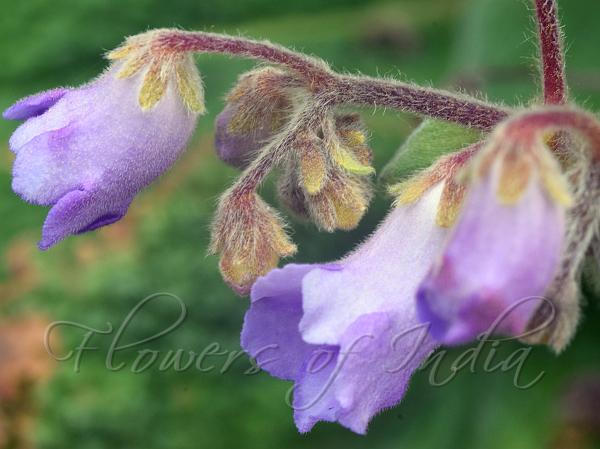|
| Bracted Stone Flower |
|

|

| File size | 584596 |
| Original date | 10/18/18 1:18 PM |
| Resolution | 2048 x 1536 |
| Flash | Flash did not fire |
| Focal length | 90.0mm |
| Exposure time | 1/160s |
| Aperture | 16.0 |
| Focus Distance | |
| Metering Mode | Multi-segment |
| Camera make | NIKON CORPORATION |
| Camera model | NIKON D3300 |
| Sensor type | OneChipColorArea |
|
|
|
|
Photo: |
Botanical name: Henckelia bracteata Family: Gesneriaceae (Gloxinia family)
Bracted Stone Flower is a newly discovered plant which
is quite similar to
Long-Scape Stone Flower in
the shape of its leaves, and in having flowering stems much longer
than the leaves. However, it can be distinguished by its flower-cymes
having a larger number of flowers (14-38), its large elliptic to
obovate bracts, ovate sepals, and the presence of eglandular hairs at
the junction of the anther lobes and filaments. It is a perennial
stemless herb, with rootstocks. Leaves are 8-14, basal; leaf-stalk 2-9
cm long, velvet-hairy, winged, wings 2-3 mm wide; leaf blade
elliptic-ovate, 5.5-12.5 x 3-9 cm, thick, surfaces usually wrinkled,
both surfaces velvet-hairy, but more so on younger leaves. Flowers are
zygomorphic, 10-20 x 4-9 mm. Calyx 5(or 6)-partite, very deeply divided
or basally fused; sepals reddish brown, ovate, 3-4 x 1-2 mm, unequal,
white woolly, margin entire, tip slightly pointed. Flowers are
bell-shaped, 5-lobed, hairy out- side, hairless inside; tube lilac to
pale lilac with a yellow patch in throat, 7-9 x 5.5-7.5 mm; petals pale
lilac to lilac, 5.2-7 x 7.4-8.3 mm, unequal, tip ovate to rounded.
Bracts are 2 at each branching point, elliptic to obovate, 10-21 x 5-8
mm, woolly, margin rounded toothed, tip obtuse to rounded. Bracted
Stone Flower is endemic to the S Western Ghats, currently known only
from Kurisumala in Kottayam district of Kerala.
| Identification credit: S. Kasim, Janeesha Mohideenkoya | Photographed in Wagaman, Kerala. |
• Is this flower misidentified? If yes,